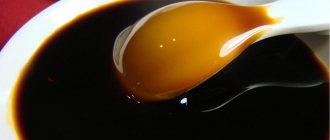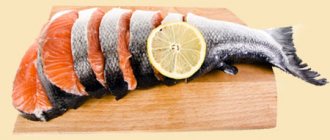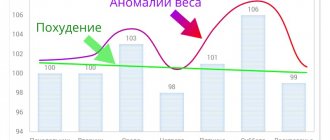Childbirth is always a test for a woman’s body, after which it needs recovery. Therefore, many expectant mothers are interested in whether a bandage is needed after childbirth. This is a really useful product that allows you to restore the normal size and tone of the uterus much faster. Thus, a woman gets into shape faster after pregnancy.
Unlike a prenatal bandage, this type of product is made from a more elastic material with increased density. It is an elastic band with a tight insert in the abdominal area that fits well around the waist. The degree of tightening is regulated by special fasteners. As a result, the product provides the necessary level of compression to effectively support the abdomen, restore the tone of the abdominal muscles, thereby reducing the size of the uterus. This is the main purpose of a postpartum bandage.
Types of postpartum bandages
Depending on the design, the following varieties exist:
- Bandage belt. It is an elastic band that provides full coverage of the abdomen and goes down to the hips. It has good stretching ability.
- Bandage panties. It has good stretching properties, a wide waistband and elastic inserts in the lumbar and abdominal areas. It fits the figure well, making the product almost invisible under clothing.
- Bermuda bandage. A variant of the previous type with increased length.
- The bandage skirt is a wide elastic band with Velcro. Worn over underwear. Covers areas of the body from the hips to the waist, providing effective tightening.
- Bandage intended after caesarean section. A type of belt bandage with a completely unfastened ribbon. This design provides quick access to the seam to perform the necessary procedures.
Indications for use
Wearing a postpartum bandage may be prescribed by your doctor, especially in the following cases:
- after natural childbirth with severe abdominal pain;
- for better healing of the suture and for pain after cesarean section;
- with low uterine tone;
- for postpartum hernias;
- with pathological progress of childbirth;
- for pain in the back and lower back;
- with postpartum exacerbation of scoliosis;
- to increase muscle tone of the peritoneum;
- to reduce stretch marks on the stomach;
- after multiple pregnancy;
- with severe sagging abdomen.
Photo source: shutterstock.com
Features of choosing postpartum bandages
The choice of product should be made in accordance with the recommendations of the doctor. However, it will also be useful to have a general idea of how to choose the right postpartum bandage. Several basic recommendations will help with this, which are as follows:
- The product should not cause discomfort, since it will need to be used for quite a long time. Therefore, before choosing a postpartum bandage, you need to carefully try it on. It is only right to choose a product that does not cause you any discomfort.
- Pay attention to the material. The best option is a bandage made of natural fabrics or artificial hygroscopic materials. You will have to pay more for this, but the comfort and beneficial effect will be at a higher level compared to cheap models.
- The shape and location of the fasteners must be such as not to scratch, rub the skin, or cause other inconvenience. If there is any discomfort on this side, it would be better to refuse the purchase immediately.
- It is strictly not recommended to buy a used bandage. Of course, this choice will save money. However, in this case you will receive a stretched product, the beneficial effect of which will tend to zero. In addition, this is an extremely poor choice from a hygiene point of view.
Belly after childbirth: a guide to action
Breasts and abdomen after childbirth are the number one topic for women who have recently become mothers, because they want to preserve the beauty of the female body for a long time. Today we continue to talk about restoring female forms after pregnancy and the topic of today’s conversation is the belly after childbirth.
Sarvar Kazimovich, thank you for your time, tell us what happens to a woman’s stomach during pregnancy?
If we consider the abdominal area, then the side facing the spine is inextensible. Potentially, the belly can grow in the remaining three directions. During pregnancy, this vector is directed forward. The increase occurs due to the fact that the abdominal wall consists of soft tissue and, accordingly, is stretchable.
From the very beginning of pregnancy, hormones begin to be released into the blood, in particular cortisol, which makes the skin more stretchable. This applies not only to the skin of the abdomen, but also to the integumentary tissues of the mammary glands, which rapidly increase in the first weeks of pregnancy.
What happens to tissues after the birth of a child?
After childbirth, a reverse mechanism is activated aimed at tissue contraction, stimulating the production of collagen and elastin. If a woman during this period additionally engages in physical education, fitness, undergoes massage and cosmetic procedures, then there may be no traces of pregnancy left.
But most often, young mothers have no time to take care of themselves during this period, because they have a newborn in their arms. The body's reserves for restoration, which are activated after childbirth, gradually disappear. Time has passed. Even if the excess fat tissue subsequently disappears, the excess skin is no longer reduced. In addition, often during pregnancy not only the skin, but also the aponeurosis and muscle frame are stretched. Hernias and diastasis (separation of the muscles of the anterior abdominal wall) may form.
It turns out that abdominal exercises are only effective in the first few months after childbirth?
The hormonal boom, which is aimed at restoring the female body, lasts 5-6 months. If during this period a woman actively performs exercises to strengthen the pelvic frame, the anterior abdominal wall, maintain the shape of the mammary gland, uses a contrast shower, special creams, and wears compression underwear, then nature has created all the conditions for everything to be fine.
Evolution has laid down a powerful regenerative mechanism. It only takes a little help for him to return to his previous form.
Let's take a closer look at the case of pregnancy with twins (triplets), when the abdominal distension is especially large.
Even with good skin contractility, twin pregnancy is more likely to cause separation of the muscles of the anterior abdominal wall (diastasis). Sometimes this is accompanied by hernial protrusions. When the abdomen tenses, a ridge appears. A woman can feel it with her hands, pressing on the area of the middle of the abdomen, a “failure” is felt. Upon examination, diastasis or hernia of the anterior abdominal wall is diagnosed, which is already a medical indication for surgical intervention. In such cases, first we perform a hernia repair, restore the aponeurosis, tighten the muscles and at the same time remove excess skin, that is, we restore the aesthetic component of the abdomen.
In regular clinics, this is often done through a midline incision, and it looks unsightly, because it leaves a large scar in the visible area. We are trying to hide the scar in the bikini area, which will be covered with underwear and will be invisible even in a bikini.
Next, we combine hernia repair with skin tightening. We rarely use synthetic materials (reinforced with mesh implants). They give a good effect, but for young women planning pregnancy in the future, they are excluded. If necessary, navel surgery and hernia repair in the presence of an umbilical hernia are performed.
What are the most common effects of childbirth on the belly?
The most common consequences: stretch marks, excess skin, diastasis, hernia of the anterior abdominal wall, umbilical hernia. By the way, people often ask about stretch marks (stretch marks), essentially they are burst skin that has not kept up with the growth of the abdomen.
Is mini abdominoplasty applicable after childbirth?
Yes, in some cases you can get by with a mini tummy tuck. Mini abdominoplasty is used when a woman has no problems above the navel and all problems with excess skin are concentrated below the navel.
Is it possible to get by with liposuction of the abdomen after childbirth?
Liposuction works well if there is no excess skin. Those. liposuction directly removes the “layer” of subcutaneous fat. Fortunately, modern women are very active and take care of their health. Therefore, it is easier to remove such excess fat tissue in a fitness club.
How long after giving birth can I contact a plastic surgeon for tummy tuck?
A woman’s hormonal postpartum boom ends by 5-6 months. Accordingly, after 7 months the abdomen will have a reliable, stable shape and a decision can be made on the advisability of surgical correction.
Is it possible to give birth after abdominoplasty?
Yes, you can. We do not use mesh implants for young women, so you can easily become pregnant and give birth after abdominoplasty.
And if we consider this case, everything is fine with the stomach after childbirth, since the woman was actively involved in sports, did abdominal exercises, but the navel stretched and began to protrude a little, can this be corrected?
Yes, sure. The operation is called umbilicoplasty and can be performed under local anesthesia. Often a protruding navel is accompanied by an umbilical hernia. Accordingly, through one cosmetic incision we perform hernia repair and plastic surgery of the protruding navel, fixing it to the deeper layers (often to the aponeurosis). There are skin problems not throughout the abdomen, but around the umbilical area. In this case, skin plastic surgery through mini-accesses above or below the navel is justified.
What recommendations would you give to women on how to properly care for themselves during pregnancy and childbirth, and what to do if problems still remain?
A woman must remember that nature gives her a unique opportunity - powerful genetic recovery mechanisms that operate in the first months after childbirth. We must use this period. If problems remain, almost all consequences can be removed with the help of plastic surgery. Plastic surgery not only provides aesthetic correction, but also solves the pathological component - eliminates diastases, discrepancies, hernias, while not forgetting about beauty.
If a woman has already decided on surgical correction, she must first carefully examine herself, touch, listen to herself - evaluate the areas of discomfort.
After this, you need to come to us for a consultation. There are many options for solving this problem. Everything depends not only on the initial condition of the skin, but also on the condition of the anterior abdominal wall. Consultation with a plastic surgeon at the Mont Blanc clinic is free! Make an appointment by phone. Waiting for you!
Sizing
In order to determine the required size of a postpartum bandage, you need to measure the circumference of the torso under the abdomen and use the table:
These recommendations will help you choose the right postpartum bandage for you. You also need to take into account that a lot depends on what type of this product you purchase, since each of them has its own characteristics of use. Therefore, before purchasing, it is recommended that you read the instructions for the bandage, which will help you understand what you will have to deal with while wearing it.
When you can do it/don't wear it
Not everyone wears a bandage after childbirth, but in some cases it may be completely contraindicated:
- if during natural childbirth it was necessary to put stitches on the perineum, since the elastic material slightly compresses the body and interferes with blood circulation, thereby slowing it down;
- with a non-standard or longitudinal suture after cesarean section;
- if allergic reactions occur to the materials from which the bandage is made;
- for kidney disease - due to edema;
- if you have skin diseases - for example, psoriasis;
- for problems with the gastrointestinal tract.
How to put on a bandage after a caesarean section?
After surgery, you need to wear the bandage correctly so as not to harm your health. You can ask obstetricians for help to make sure you don’t make mistakes. You can also take advice from experts and figure out how to put on a bandage correctly.
Recommendations:
- It is recommended to fasten the bandage from the bottom up. The first time it is better not to rush and focus on your feelings.
- It is most convenient to put on the device in a lying position. The muscles will relax and the belly will become smaller. This will make it easier to fix the abdominal cavity.
- Do not fasten the bandage too tightly, especially if there is pain. Normal blood circulation can be disrupted, which will delay the recovery process.
- After the bandage is put on, you should make sure that it does not slip off.
- Doctors advise removing the bandage every four hours and taking a break for 30 minutes. It also happens that the device has to be worn throughout the day. It all depends on personal feelings.
- There is no need to wear the bandage at night. This may cause problems with blood circulation.
It is important to take into account the recommendations of doctors so that the product contributes to a quick recovery. It will be possible to reduce discomfort after surgery and quickly return the stomach to its normal shape. Of course, you need to choose only a high-quality and comfortable bandage. Then it will be really good for your health.
How to wear a bandage correctly?
Women should know how to use a post-operative bandage. Only with proper use will it be possible to achieve positive results. First of all, you need to listen to your feelings. It is important that there is no severe discomfort when using the bandage.
Doctors note that the product can be used as long as it makes sense. As a rule, the uterus returns to normal within 6 weeks after birth. This time is enough for it to fall into place. There is no point in using a bandage for more than 6 weeks after surgery.
It is worth noting that you need to give up the bandage gradually. During its use, the body gets used to the support. To prevent the muscles from stretching, you will need to gradually abandon the product. It is recommended to first reduce the time you use the bandage. Within a week it is necessary to reduce its use to “no”.
If there are problems with the back muscles, then the time of using the bandage can be extended. You may have to choose a different product model. More functional bandages that are designed for everyday use are suitable. It is better to choose a specific option together with your doctor.
How to choose/what to pay attention to
To ensure that the bandage fits well, does not cause discomfort and is beneficial, you need to carefully select the product:
- you need to consult a doctor before choosing a bandage model;
- You can buy only in pharmacies, or, as a last resort, in specialized stores;
- consult the seller and ask to try on the selected model;
- the product must be new, you do not need to take it if it has already been used, since the deformation of the fabric will not allow achieving the necessary fixation;
- you need accurate measurements of the abdomen and waist;
- knowing your own dimensions, you need to focus on the dimensions indicated on the product packaging;
- Bandage panties should be taken one size larger than the clothing size;
- the material must be natural (cotton and elastane), synthetics will not allow the skin to breathe;
- the fasteners should be of several levels - this will help to adjust the bandage even with changes in the figure, which, if everything is done correctly, will certainly occur;
- There should be no thick seams - they will become a source of discomfort and even pain.
When choosing such a delicate and individual item as a postpartum bandage, it is better not to rely on anyone’s opinion, since everyone’s sensations are different, and so is the concept of comfort. It is better to consult with your doctor, determine how and when you are going to wear it, what result you want to achieve, and be guided by your own preferences.










